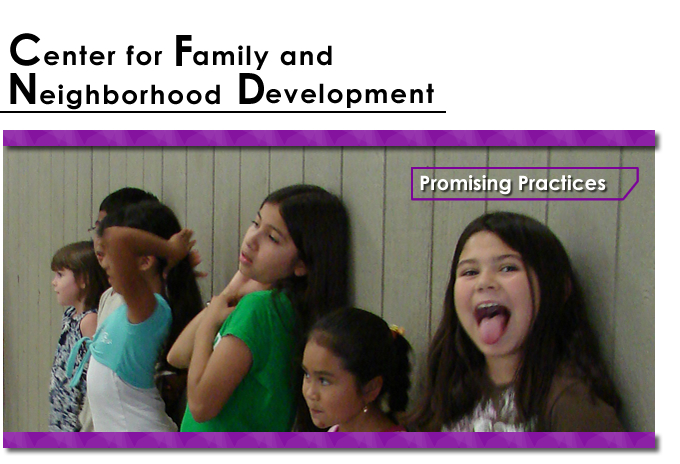Gang Prevention Promising Practices - download pdf |
| 01. |
Holistic, Systemic, Sustained Initiatives Effective strategies per addressing the presence and persistence of youth gangs in communities take into account and attempt to address the community conditions, formal contexts, problematic school experiences, peer group associations, the young person’s anti-social behavior and his/her cynical/fatalistic world view. Simple focus initiatives that focus only on one element of this problem open fail to bring out change. |
| 02. |
Gang Preventative Preventing children and adolescents from joining gangs is the most cost effective approach to addressing this issue. |
| 03. |
Attractive Alternatives Effective Programs offer attractive alternatives to gangs such as healthy and accessible venues for fun, excitement, social interaction and bonding. As well as gaining self-esteem and confidence have generally been found to be. |
| 04. |
Positive Support Systems Successful community prevention and intervention strategies nurture, create and provide positive support systems for vulnerable youth and their families. |
| 05. |
Employment Opportunities and Job Training Community ceased gang prevention initiatives which offer an array of job training, employment and other economic opportunity enhancing programs and services directed towards at risk youth provides an attractive alternative to the lure of “eay” money gangs offer young people. |
| 06. |
Community Engagement and Mobilization Communities in which residents in tough neighborhoods are engaged and mobilized to make positive changes in their neighborhoods are connected to each other, and are hopeful about their future. Not provide fertile groups for gangs to form or thrive. |
| 07. |
Family Strengthening Gang prevention initiative which targets and engages the families of youth that are most at risk for gang activity tend to be more successful than those which do not. |
| 08. |
Reaching Not Preaching Programs and services that attempt to “reach” young people at the point of their needs and aspirations generally yield more positive results than those that attempt to “breach” to young people about the “evils” of gang membership. |
| 09. |
Self Esteemed and Collective Efficacy Programs and services which nurture cultural pride, self-esteem, personal and collective eff and a sense of control and__ in young people diminishes the allure of “gang landing”. |
| 10. |
Target the Root Causes Until the underlying conditions which lead to gang formation and persistence in a community, gangs will continue to thrive and grow. |
All of these best practices should incorporate an assessment of the community’s needs, existing services, and cultural relevance.
* Sources: Juvenile Justice Bulletin September 2000-US Dept. of Justice Office of Juvenile and Delinquency Prevention; Connecting Vulnerable Youth: A Municipal Leader’s Guide. National League of Cities Institute for Youth, Education, and Families; United States Attorney’s Bulletin, May 2006; OJJDP Comprehensive Gang Model: A Guide to Assess your Community’s Youth Gang Problem; Broader Urban Involvement and Leadership Development Program (BUILD) www.whatcomcounts.org |

